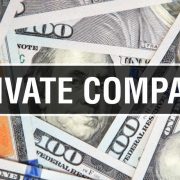Give Your Self-Directed IRA Retirement Savings a Boost
There is good news for retirement savers in 2019: The IRS has increased the maximum Self-Directed IRA contribution from $5,500 to $6,000, and if you are 50 years of age or over, you can add a $1,000 catch-up contribution for a total of $7,000.
There is one important stipulation, however. You must have earned income of at least the amount you wish to contribute. In other words, if your earned income for 2019 turns out to be $5,000, that’s all you may add to your Self-Directed IRA, even though the maximum limit is $6,000. And “earned income” means just that. You cannot include passive income such as social security, interest, or capital gains.
So how does someone without earned income set aside money for retirement?
The Spousal IRA might be the answer
A Spousal IRA can be either a Traditional IRA or Roth IRA registered in the name of a non-working spouse. The working spouse can contribute to his or her own Self-Directed IRA and the Spousal IRA, giving them both an opportunity to save for retirement even though only one of them has earned income. A Spousal IRA is an excellent way to boost the couple’s total retirement savings.
There are rules for Spousal IRAs
To qualify for a Spousal IRA, you must be married and file your taxes jointly. The working spouse’s income must be at least equal to the contribution to the Spousal IRA. If the contributing spouse also has a Self-Directed IRA, the taxable income must be at least equal to the total contributions to both IRAs.
If you decide to use a Traditional IRA, you will make contributions that you may deduct at tax time. You will pay income tax on those distributions at retirement and also be subjected to Required Minimum Distributions (RMD) when you reach 70 ½ years of age.
If you choose a Roth IRA, you will make your contributions after taxes, so there are no RMDs or taxes owed on distributions. If you are a working spouse, you have the option to use one type of Self-Directed IRA, while your non-working spouse uses the other.
If you cannot have a Solo 401(k), use a SEP IRA
A Solo 401(k) plan covers one employee, so if you are self-employed or a small business owner with no full-time employees, these plans are perfect. The problem is that they must have been established by December 31st of last year so you can make contributions for this year.
If you cannot take advantage of this popular plan this year, consider using a Simplified Employee Pension Individual Retirement Arrangement (SEP IRA) instead. A SEP IRA is a profit sharing plan that allows an employer to make up to a 25% profit sharing contribution to all eligible employees up to a maximum of $56,000 for 2019. In cases of a single-member LLC or sole proprietorship, the employer can contribute up to 20%. And, unlike the Solo 401(k), you can open and contribute to a SEP IRA for last year any time before April 15th.
Boost your retirement savings with an HSA
Anyone covered by a High Deductible Health Plan (HDHP), is allowed to set aside funds, up to the contribution limit, to pay for qualified out-of-pocket medical expenses.
Health Savings Accounts have several advantages:
- Contributions to an HSA are 100% deductible (up to the legal limit) –just like a Self-Directed IRA.
- Withdrawals used to pay qualified medical expenses–including dental and vision–are not taxed.
- Interest earnings accumulate tax-deferred, but if you use them to pay qualified medical expenses, they are tax-free.
- Any unused money in your HSA account is not forfeited at the end of the year but is carried forward and continues to grow tax-deferred.
- HSAs can be invested in mutual funds, stocks, and other investment tools to generate even more money.
The maximum 2019 contribution is $3,500 for individuals and $7,000 for families. There is a $1,000 catch-up for individuals over the age of 55.
Talk to the professionals for other ways to boost your retirement savings
Interested in learning more about Self-Directed IRAs? Contact American IRA, LLC at 866-7500-IRA (472) for a free consultation. Download our free guides or visit us online at www.AmericanIRA.com.











